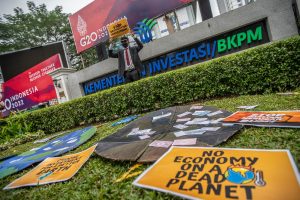Environment law charity ClientEarth has launched its new Asia Nature Strategy 2025 -2030, aimed at embedding biodiversity protection directly into enforceable legal frameworks across the region. ClientEarth’s vision is to create a future where strong legal frameworks and local communities work together to protect Asia’s rich biodiversity. This will ensure safeguarded ecosystems and the long-term resilience of both the environment and people by utilising the power of the law through legal analysis, policy development, advocacy, and capacity enhancement.
Central to the approach is rights-based conservation, which recognises that local communities, ecosystems, and nature itself can hold legal rights. This framework aims to balance environmental goals with social justice by emphasising the key role of indigenous peoples, local communities, and local actors as partners in conservation.
Though intended as a regional framework, the strategy places special emphasis on Indonesia, the Philippines, and Japan. These three countries are not only biodiversity hotspots, but also integral nodes in global supply chains for timber, seafood, and minerals.
To deliver leverage and impact, the strategy focuses on four interconnected areas. It begins with operationalising the Global Biodiversity Framework’s 30×30 target—protecting 30% of land, waters, and seas by 2030—by translating this global commitment into binding legal mandates. It then advances forest governance by strengthening protections for forests through clarifying tenure and customary rights, preventing illegal logging, promoting restoration, and enabling community stewardship.
Marine biodiversity conservation is another key pillar, ensuring robust legal protections for marine ecosystems such as coral reefs, mangroves, and coastal waters by combining fishing regulations, habitat protection, and community co-management. Finally, the strategy emphasises sustainable critical minerals, seeking to balance mineral extraction for the energy transition with biodiversity protection and the rights and livelihoods of local communities.
To deliver impact, ClientEarth will be working with and supporting IPLCs, civil society organisations, and local leadership to ensure our efforts are complementary and additive to, and not duplicative of, existing endeavours in strengthening frameworks, enhancing enforcement and promoting sustainability.
ClientEarth sees Asia at a rare inflexion point. Rising public awareness of environmental risks, stronger civil society movements, advances in monitoring technology, and growing global pressure for action all create an opening for legal innovation. By embedding conservation targets into legal systems now, we can ensure long-term environmental resilience across Asia.
This article is published in cooperation with ClientEarth.
Banner photo: Khun Ta/shutterstock.com















